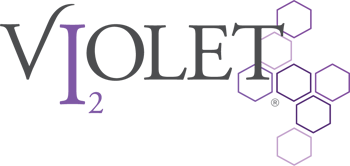You’re drinking green smoothies, doing yoga, and buying the “clean” beauty products, and yet your hormones still feel like they’re throwing a temper tantrum. What gives? The culprit might be sneakier than you think: microplastics.
Yep, those tiny particles that show up in everything from water bottles to face wash are more than just bad for the oceans; they’re messing with your hormones, too. From estrogen dominance to breast tenderness, microplastics (and the hormone disruptors they bring with them) are showing up in women’s health in some surprising ways.
The good news is that once you know where they’re hiding and how they work, you can start making small, smart changes to protect your body.
What Are Microplastics, and Where Are They Hiding?
Microplastics are exactly what they sound like: itty-bitty pieces of plastic (less than 5mm) that have broken down from larger plastic items or were manufactured that way on purpose (hello, glitter). They’re now everywhere: in our oceans, soil, food, water, and air. And unfortunately, they’re making their way into our bodies.
What Are Common Culprits of Microplastic Toxicity?
- Food packaging: that plastic-wrapped salad isn’t doing your hormones any favors.
- Plastic containers and water bottles: especially when heated.
- Personal care products: like exfoliants with “microbeads” or glittery lotions.
- Synthetic clothing: yep, your yoga pants might be shedding fibers every time you wash them.
In other words, if you’re living on planet Earth, you’re probably exposed. But that doesn’t mean you’re helpless.
How Microplastics Enter the Body and Why That Matters
So, how do these little hormone hijackers sneak in? The most common ways are:
- Ingestion: We swallow microplastics through food, beverages, and contaminated water.
- Inhalation: Airborne particles from clothes, carpets, or pollution can end up in our lungs.
- Absorption: Skin exposure to beauty products and plastics can also be a route of entry.
Once inside, microplastics don’t just sit there looking pretty. Many of them leach endocrine-disrupting chemicals like BPA, phthalates, and parabens, aka xenoestrogens, synthetic compounds that mimic estrogen in the body. These sneaky chemicals can throw off your natural hormonal balance, especially when they build up over time.
The Link Between Microplastics and Hormonal Disruption
Let’s talk about real symptoms. If your cycle is all over the place, your boobs feel like balloons before your period, or you’re riding an emotional rollercoaster for no apparent reason, your hormones might be crying out for help. And microplastics could be part of the problem.
These estrogen mimickers interfere with your endocrine system, the hormonal superhighway that regulates everything from mood to metabolism. When xenoestrogens bind to estrogen receptors, they can increase estrogen levels unnaturally, leading to estrogen dominance.
What Does Estrogen Dominance Impact?
- Breast tenderness or pain
- PMS and bloating
- Fatigue, anxiety, or irritability
- Increased risk of hormone-sensitive conditions
And yes, research is growing around the role of microplastics and breast health, with early studies suggesting that these toxins may impact breast tissue in ways we’re only beginning to understand. In fact, A recent study found over 900 chemicals linked to breast cancer, including PFAS, phthalates, bisphenols, and pesticides, that can disrupt estrogen and progesterone signaling in the body.
Can We Avoid Microplastics Completely?
Before you go Marie Kondo your whole house, here’s a reality check: you can’t eliminate environmental toxins entirely. But you can reduce your exposure and support your body in detoxing them naturally.
What Are Simple Ways to Reduce Your Toxic Load?
- Use glass or stainless-steel containers for food and drinks.
- Skip plastic-wrapped produce when possible.
- Swap synthetic clothes for natural fibers like cotton or bamboo.
- Avoid beauty products with “polyethylene,” “acrylate,” or “microbeads” on the label.
Every little switch helps, and they add up over time. Clean living isn’t about being perfect. It’s about being aware.
How Violet Supports Your Journey to Clean, Balanced Living
This is where Violet comes in: your daily dose of smart, supportive care. Violet Daily is a breast health supplement made with molecular iodine, a nutrient known for helping regulate estrogen metabolism and reducing breast tenderness and other hormonal symptoms.
How does it work? Iodine supports your thyroid and helps your body clear excess estrogen more efficiently. That’s a big deal when we’re being bombarded with estrogen-mimicking plastics left and right.
Think of Violet as part of a holistic strategy to reclaim control, reduce discomfort, and feel like yourself again.
Everyday Steps to Reduce Hormone Disruptors
Want to start detoxing your daily life? Try these quick wins:
- Switch to clean beauty brands that avoid parabens, phthalates, and synthetic fragrances.
- Use fragrance-free laundry detergents and cleaners.
- Drink from a reusable glass or metal water bottle.
- Eat whole foods over packaged/processed options.
- Add Violet to your daily supplement routine for extra hormonal support.
You don’t need to go off the grid to feel better. You just need to make a few savvy swaps.
You’re Not Alone in This
If you’ve been feeling off and don’t know why, it’s not just in your head. Hormonal imbalance is real, and environmental toxins like microplastics are part of the puzzle. But here’s the empowering part: knowledge is power, and you’re already ahead of the curve just by reading this.
With a few mindful choices and a little help from Violet, you can support your body, balance your hormones, and feel more confident in your wellness journey.
Next up? Let’s raid that makeup bag. In next month’s blog, we’ll uncover the endocrine disruptors hiding in your favorite beauty products and show you how to build a hormone-safe beauty routine that supports both your glow and your balance.
